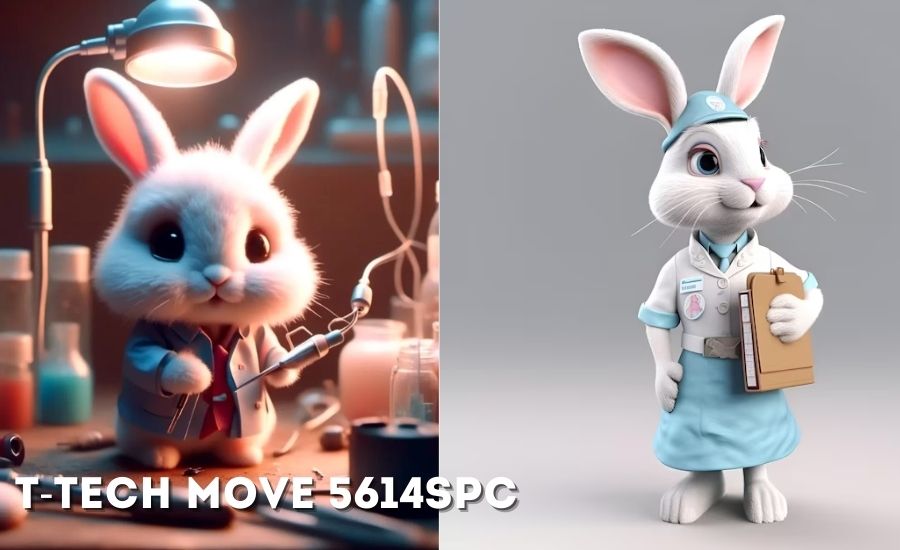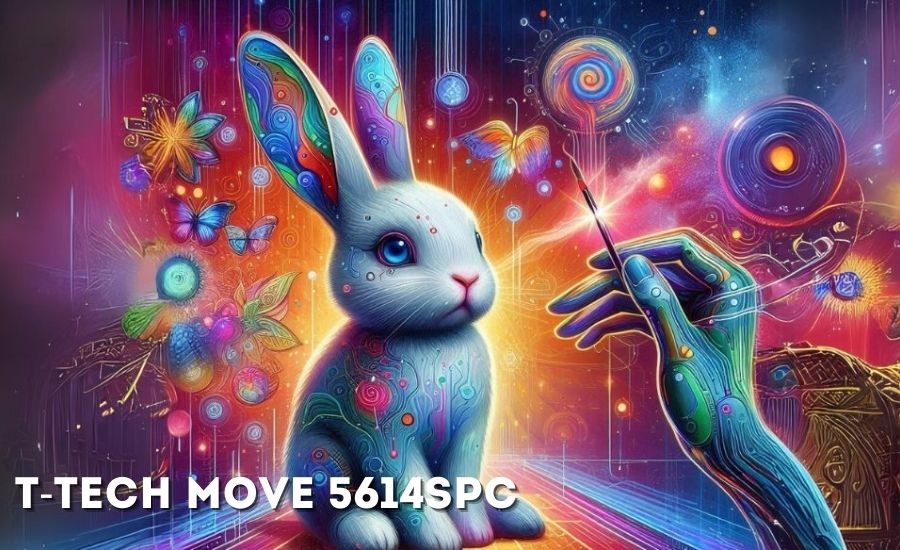Have you ever thought about a rabbit acting as a psychiatrist? It sounds funny and strange, right? However, with the magic of artificial intelligence (A.I.), this quirky idea has come to life through creative art! The AI Art Rabbit Psychiatrist is not just an amusing concept; it is an exciting blend of technology and imagination that shows how A.I. can transform the world of art. In this article, we will dive deep into what the AI Art Rabbit Psychiatrist is all about, why it is interesting, and how it showcases the innovative capabilities of AI.
What Is the AI Art Rabbit Psychiatrist?
The AI Art Rabbit Psychiatrist represents a unique artistic vision where artificial intelligence generates images of a rabbit acting as a psychiatrist. This is not just a random concept but a delightful mix of humor and seriousness. Imagine a fluffy bunny sitting on a comfy chair, listening to its “patients,” just like a therapist. It turns the severe world of therapy into something fun and approachable.
A.I. works by analyzing vast amounts of data, including pictures and concepts of both rabbits and therapists. By learning from this data, A.I. can create new images that combine these two worlds in unexpected ways. This whimsical artwork aims to bring a smile to people’s faces while also prompting thoughts about mental health and emotional well-being.
The Role of A.I. in Creating Art
Artificial intelligence plays a crucial role in generating this kind of art. Using machine learning, A.I. studies countless images of both rabbits and therapists to understand their visual elements. The A.I. learns how these figures are depicted—what they wear, how they sit, and their facial expressions. Then, it creatively blends these features to produce unique, amusing images.
For instance, A.I. might generate a picture of a rabbit wearing glasses, jotting down notes on a notepad while listening intently to a toy. This blend of humor and creativity makes the artwork charming and engaging. It is fascinating how technology can take simple ideas and transform them into something innovative and entertaining.
Why Is the AI Art Rabbit Psychiatrist So Captivating?

One of the most appealing aspects of the AI Art Rabbit Psychiatrist is its playful combination of a cute animal and a severe profession. This mix creates something unique and delightful. Here are some reasons why this concept is so captivating:
- Humor and Whimsy
Using a rabbit as a psychiatrist introduces humor into a typically severe subject. Mental health can sometimes feel daunting, but seeing a cute bunny in a therapist’s chair can lighten the mood. This playful approach encourages people to engage with topics around mental well-being without fear or discomfort.
- Encouragement for Mental Health Awareness
Art has always been a powerful medium for addressing critical issues, and the AI Art Rabbit Psychiatrist is no exception. By presenting therapy in a light-hearted manner, it opens the door to conversations about mental health. This can help reduce stigma and make seeking help more acceptable and normal.
- Creativity Unleashed
The concept showcases the vast potential of A.I. in art. A.I. can combine different themes, styles, and ideas in ways humans might not initially consider. The playful juxtaposition of a bunny and a psychiatrist illustrates how A.I. can push the boundaries of creativity, inspiring artists and creators alike.
How Does A.I. Create These Charming Images?
Creating images like the AI Art Rabbit Psychiatrist involves several complex processes that allow A.I. to generate art that is both visually appealing and conceptually engaging. Here is how A.I. goes about it:
- Data Collection and Training
First, AI needs a substantial amount of data. This includes images of rabbits, images of therapists, and illustrations of various scenarios involving both. By feeding this data into a neural network, A.I. learns the characteristics of each subject. For example, it identifies standard features of rabbits—like fluffy fur and long ears—and elements of therapists, such as glasses and notepads.
- Pattern Recognition
Once trained, the A.I. begins recognizing patterns within the data. It learns how to combine visual elements from each category. For instance, it understands how to represent a rabbit sitting on a chair, holding a notepad, and wearing glasses. This recognition allows A.I. to mix these elements creatively, creating whimsical images.
- Image Generation
With the learned patterns, A.I. uses algorithms to generate new images. This process can involve various techniques, such as generative adversarial networks (GANs), where one A.I. generates images while another evaluates their authenticity. This back-and-forth helps create high-quality art that meets the criteria of both cuteness and relatability.
- Refinement
The generated images can be refined through human oversight or additional A.I. training. Artists might tweak the final products to ensure they resonate well with audiences, ensuring that the artwork captures the charm and humor intended.
The Emotional Impact of AI Art Rabbit Psychiatrist
Art has a unique ability to evoke emotions and inspire feelings. The AI Art Rabbit Psychiatrist uses humor and charm to address deeper topics. Here is how this art can affect people’s emotions:
- Laughter and Joy
Seeing a rabbit acting as a therapist can instantly bring a smile to anyone’s face. Laughter is an essential part of emotional health, and this artwork provides a playful escape from the seriousness of everyday life. It is a reminder to find joy even in discussions about serious topics.
- Comfort in Vulnerability
The image of a gentle, fluffy rabbit offering therapy can evoke feelings of safety and comfort. For individuals who might be hesitant to seek help, this art serves as a gentle nudge. It conveys that talking about feelings and emotions can be safe and friendly rather than intimidating.
- A New Perspective on Mental Health
Humor can help shift perspectives on mental health. The AI Art Rabbit Psychiatrist opens discussions about emotions and therapy in a way that feels less daunting. It encourages people to view mental health as an essential aspect of life that deserves attention and care rather than something to shy away from.
Read Also: T-Tech-Move-5614SPC
The Future of AI Art: More Possibilities Await

The AI Art Rabbit Psychiatrist is just the tip of the iceberg regarding what A.I. can do in art. As technology advances, we can expect even more exciting and creative ideas. Here are some possibilities for the future of AI-generated art:
- Diverse Themes and Characters
Imagine other animals taking on various professions—like a wise owl as a teacher or a playful dolphin as an artist. The possibilities for new and whimsical characters are endless. This variety allows artists to explore different themes, emotions, and concepts, making art accessible and enjoyable.
- Interactive Art Experiences
With advancements in A.I., we could see interactive art installations where A.I. creates unique pieces based on viewer input. People could engage with the art, influencing its direction and design. This interactivity would deepen the connection between the audience and the artwork.
- Combining Different Art Forms
A.I. can potentially merge various art forms, such as music, visual art, and storytelling. Picture an AI-generated animated short film featuring a rabbit psychiatrist, accompanied by a whimsical soundtrack. This convergence of arts could create a richer, more immersive experience.
- Personalized Art
As A.I. technology improves, it can create personalized artwork based on an individual’s preferences and emotional state. Imagine receiving a custom piece of art that reflects your feelings or interests, designed just for you by A.I. This personalization can create a deeper emotional connection to the art.
Conclusion
The AI Art Rabbit Psychiatrist is an incredible example of how technology and creativity combine to produce something truly magical. This playful artwork not only brings smiles but also encourages essential conversations about mental health. As A.I. continues to evolve, we can expect even more innovative ideas that blend humor and seriousness in delightful ways.
Looking ahead, the future of A.I. art is bright and full of potential. We can imagine a world where technology amplifies our creativity, making art more accessible and engaging. The AI Art Rabbit Psychiatrist is just one step in this exciting journey, reminding us of the power of imagination and the joy of creativity.
FAQs
Q: What is the AI Art Rabbit Psychiatrist?
A: The AI Art Rabbit Psychiatrist is a creative concept where A.I. generates images of a rabbit acting as a psychiatrist, blending humor with themes of mental health.
Q: How does A.I. create these images?
A: A.I. learns from large datasets of images of rabbits and therapists, recognizing patterns and combining elements to create unique art.
Q: Why is this concept interesting?
A: It combines a cute animal with a serious role, using humor to make discussions about mental health more approachable.
Q: Can this art help people?
A: Yes! The playful imagery can bring joy and comfort, encouraging conversations about mental health in a light-hearted way.
Q: What does this say about the future of A.I. art?
A: The AI Art Rabbit Psychiatrist illustrates the endless creative possibilities of A.I., paving the way for more whimsical and innovative ideas.
Q: How can AI-generated art affect emotions?
A: It can evoke laughter and joy, provide comfort, and encourage a positive perspective on mental health discussions.
Q: What future developments can we expect in A.I. art?
A: We may see diverse characters, interactive experiences, personalized art, and the merging of various art forms as A.I. technology advances.

Leave a Reply